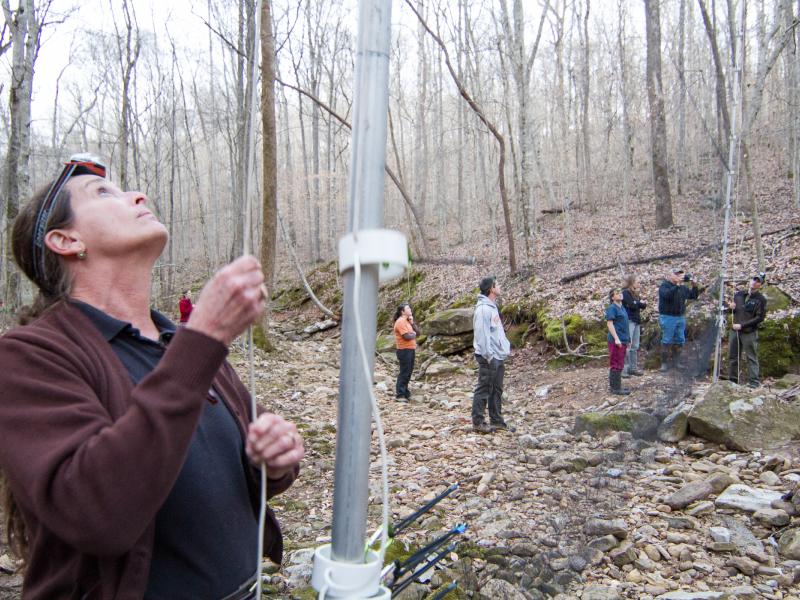Alabama is a state of great biological diversity and bats are no exception. With over 6,000 caves hidden in the state's karst geology and extensive forests, Alabama provides a home to 16 species of cave and tree dwelling bats.
Alabama's bats are insectivores and provide a great economic benefit to the people of Alabama, consuming millions of crop pests each evening. Scientists estimate the pest control services provided by bats in the United States exceed $3 billion a year. Yet the well-being of bats in Alabama is a concern, as they face a number of environmental threats including habitat destruction, water pollution, pesticide uses, disturbance of caves, and White-Nose Syndrome.
All but one of Alabama's bat species are listed as Highest, High, or Moderate Conservation Concern in the State's Wildlife Action Plan. Three Alabama bat species are listed as Threatened or Endangered by the U.S. Fish and Wildlife Service. Several species are State Protected.
The Alabama Bat Monitoring and Conservation Program seeks to manage, protect, conserve, and enhance the native bat species of Alabama. The Program pursues this mission by monitoring bat populations, catalyzing research, promoting partnerships through the Alabama Bat Working Group, and providing technical assistance to the public.
If more information, contact ADCNR's Nongame Wildlife Section at (334) 242-3469.
Alabama Bat Working Group (ABWG)
The ABWG was formed in 2009 to bring together individuals, organizations, and agencies interested in conserving Alabama's bat species. The purpose of the group is to coordinate, facilitate, and focus bat conservation, research, monitoring, and outreach in Alabama. The state Nongame Biologist for North Alabama serves as lead for the the ABWG.
Monitoring Activities
The program endeavors to monitor Alabama's bat populations through the following activities:
- White-Nose Syndrome surveillance. White-Nose Syndrome (WNS) is a devastating fungal disease from Europe that infects cave dwelling bats in hibernation. Over 6 million bats have been killed in North America. Alabama is conducting a surveillance program to monitor the extent of WNS in the state. Each winter, Nongame Program staff and partners from the ABWG inspect bat hibernacula, looking for visible signs of disease and collecting biological samples to test for the presence of the fungus that causes the disease. They also count the number of bats of each species to track the effects of WNS on Alabama cave dwelling bat populations. Current WNS Range Map.
- Gray Bat cave emergence counts. The gray bat is a federally endangered species that roosts in caves in both summer and winter. North Alabama is a stronghold for the species, being home to both the most important cave and most important hibernacula for the entire species. Each summer Nongame Biologists monitor the gray bat population by counting bats at priority gray bat caves as they emerge in the evening to forage.
- Search for new significant bat locations. Within the last two years, Nongame Program Biologists have documented the largest known summer population of southeastern bats in Alabama, documented only the second known maternity cave for southeastern bats in the state, documented 3 previously unknown hibernacula for southeastern bats, discovered the largest known Alabama population of Brazilian Free-tailed bats in an abandoned railroad tunnel, and documented a new significant gray bat cave.
- ABWG Bat Blitz. Each year Nongame Biologists participate in the ABWG Bat Blitz. The purpose of the Bat Blitz is to focus on a locale in Alabama that has been poorly sampled for bats and bring together bat biologists and enthusiasts from across the state for three days of intense bat surveys.













